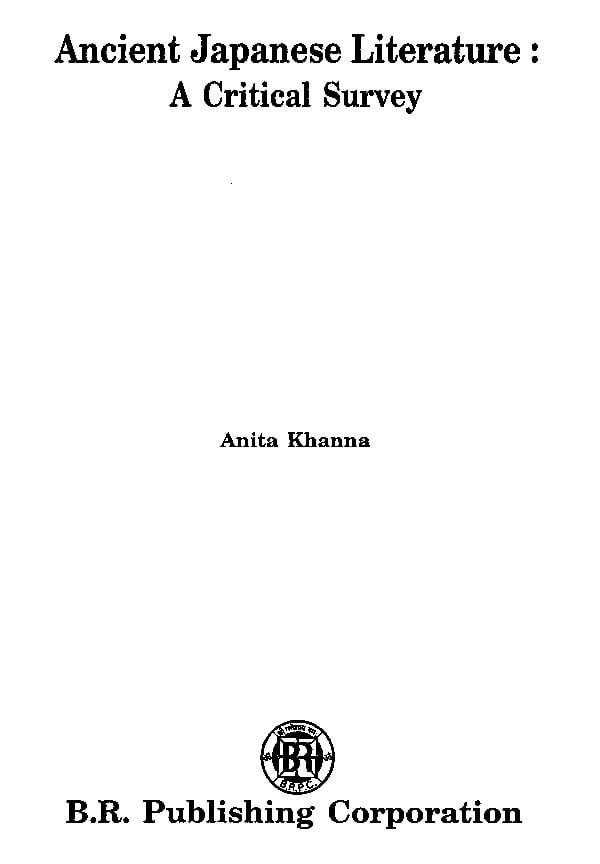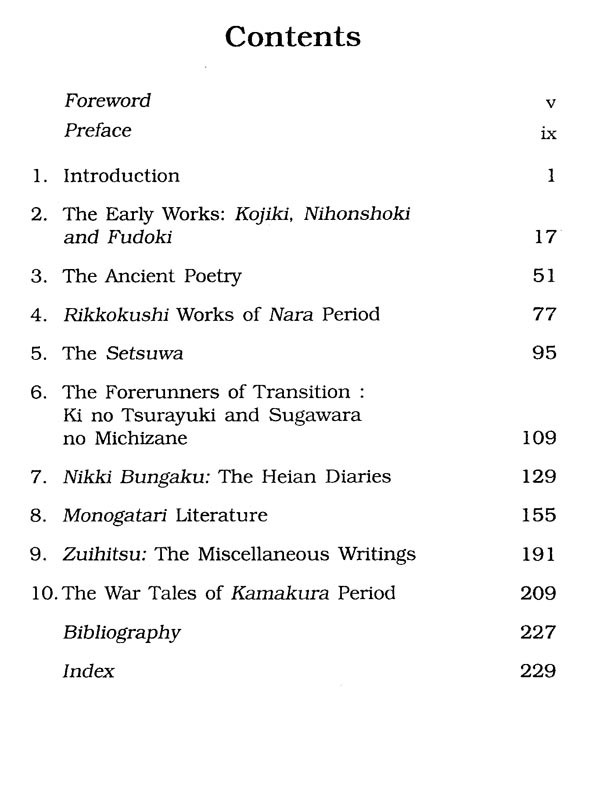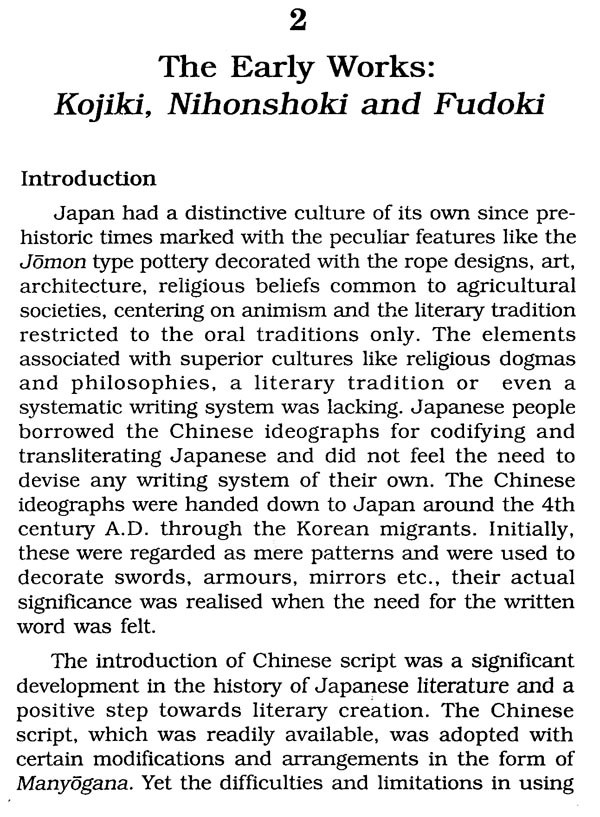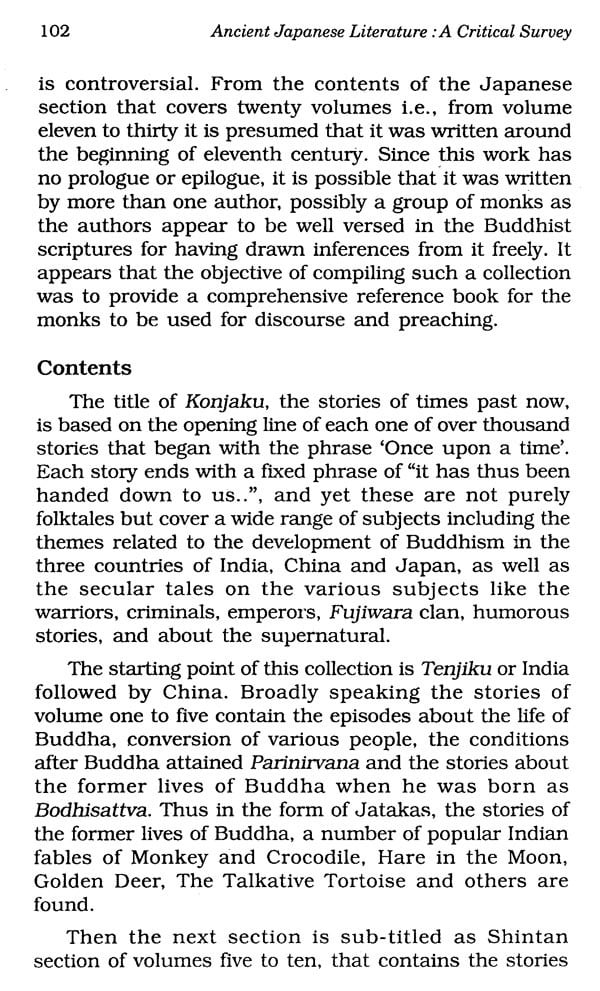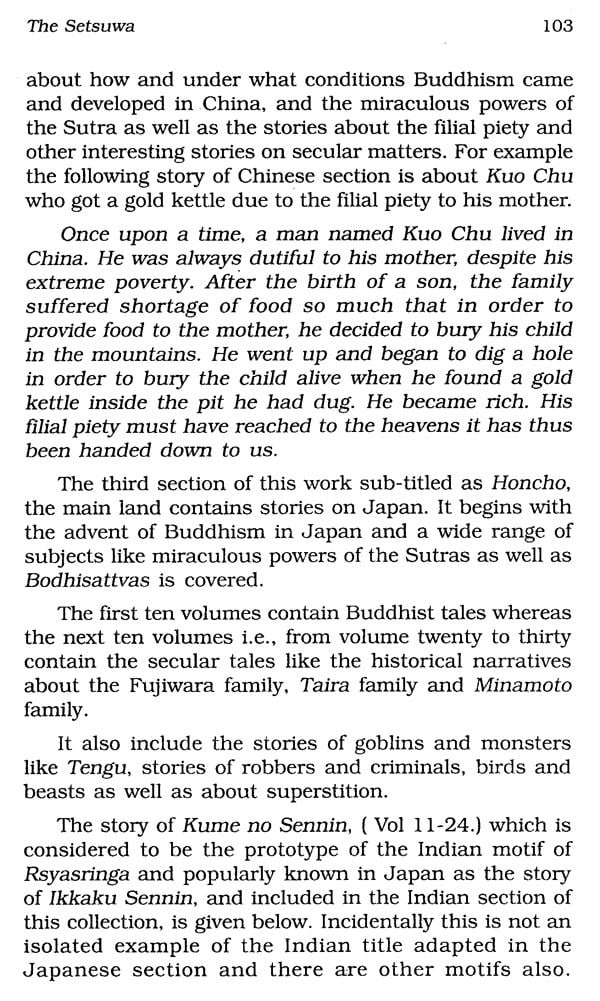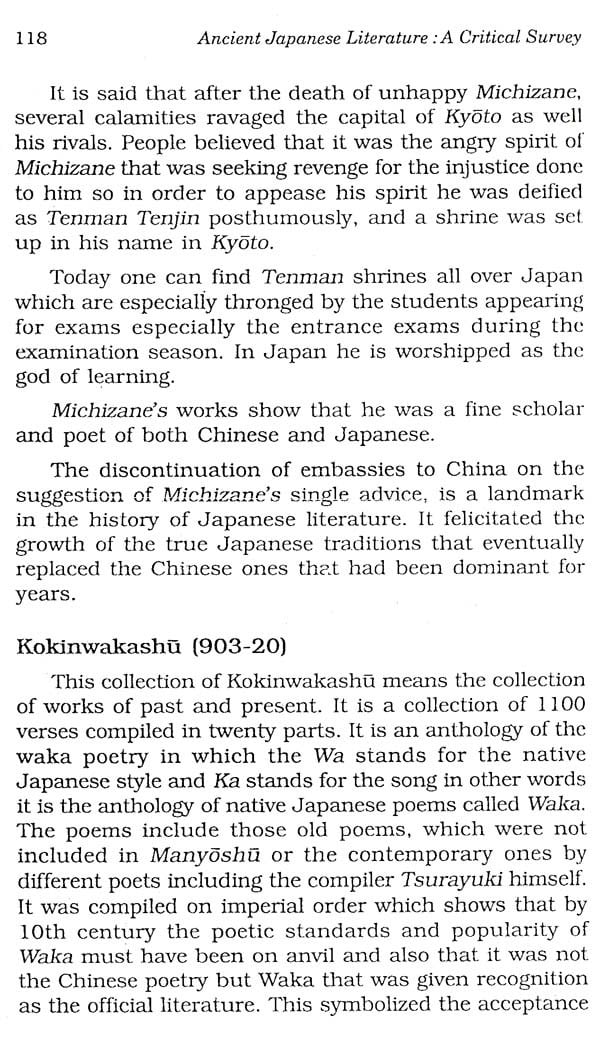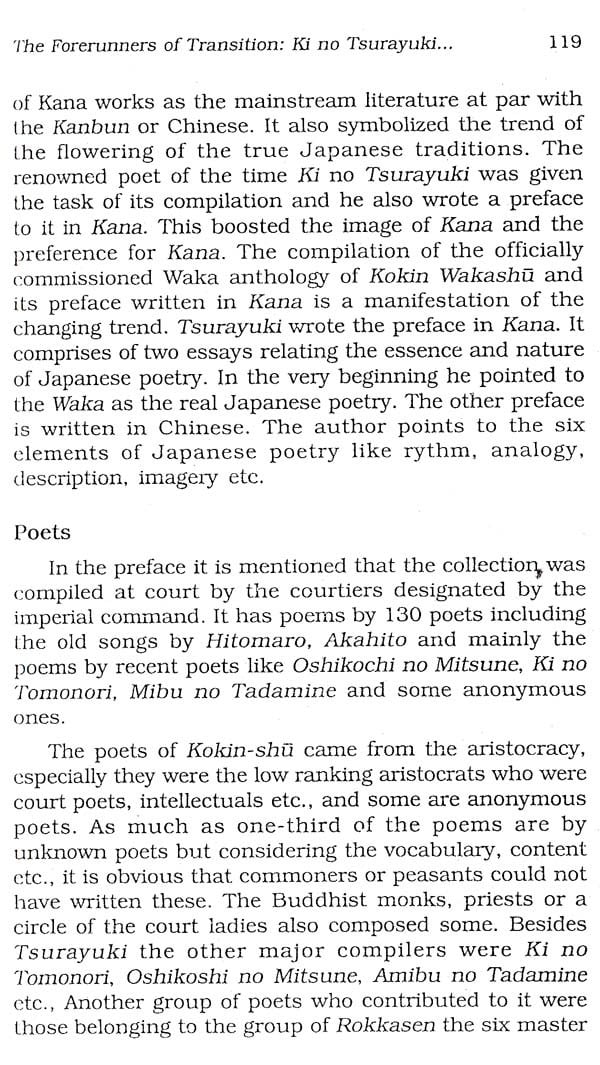
Ancient Japanese Literature- A Critical Survey
Book Specification
| Item Code: | AZE593 |
| Author: | Anita Khanna |
| Publisher: | B.R. PUBLISHING CORPORATION |
| Language: | ENGLISH |
| Edition: | 2002 |
| ISBN: | 9788176462563 |
| Pages: | 244 |
| Cover: | HARDCOVER |
| Other Details | 9.00x600 |
| Weight | 420 gm |
Book Description
Japanese literature has been her forte, which took her back to Japan to the school of letters at Osaka University. Subsequently she worked on the juvenile literature of Meiji and Taisho period at the International Institute of Juvenile Literature in Japan and presented a research paper in their research journal.
She wrote her first book The Jataka Stories in Japan, that traced the development of the Indian motifs adapted in Japanese literature. She has also authored Some Japanese Stories and Stories of Buddha.
Currently she is based at the Jawarharlal Nehru University teaching Japanese as an Associate Professor at the School of Languages, Literature and Culture Studies.
Japanese literature has many peculiarities. Japanese borrowed ideographic script from China and modified it to suit their language. The earlier written literature in Japan is available in Chinese ideographic characters only. Later, the Japanese developed their own phonetic Kana scripts called Hiragana and Katakana but they did not abandon the use of ideographic script that had been deeply rooted in the Japanese writing system. Today, all the three scripts are needed together to read or write even a simple Japanese sentence. The earlier writings of Japan are not the works of any individual author: rather they are collected works compiled under the imperial patronage. The prose and poetry developed simultaneously from the very early times. Epic poetry is not written in Japan but it has developed some smallest poetic forms in the world known as Tanka' and 'Haiku' consisting of 31 and 17 syllables respectively. However, we find Great epic-like prose narratives known as Monogatari, embedded with Tanka poems here and there, written during 10th-13th centuries.
In my experience of teaching the history of Japanese literature from the ancient to the modern period I strongly felt that an understanding of the ancient work helps tremendously in grasping the deeper insights into the literature particularly the mindset and the ways of the people.
I take this opportunity to thank my family, colleagues and especially to the students without whose motivation and encouragement this work would not have been possible. Finally a word of special thanks goes to Mrs Chandan who after going through the whole manuscript brought it out in the present format.
Another characteristic of such imaginative creation is that it is composed usually in the verse form, which possibly could be attributed to the process of its oral transmission. Thus most creative works of the ancient period are in epic forms of poetry rather than in prose. The subject matter however remains the same i.e., the hymns, prayers, myths and legends.
In the case of Japan too, the seeds of such creation are found in the oral tradition and in lyrical forms. It is in the form of Shinto prayers sung in the native Yamato language that lacked a script. Yamato is the old name for Japan and the Yamato language simply refers to the language spoken by the people in Yamato region.
Shinto, the ancient native religion of Japan, was based on the practices of animism or nature worship. Just like any other agricultural society, in Japan to the awe of natural forces and their appeasement preoccupied the minds of the people.
**Contents and Sample Pages**
